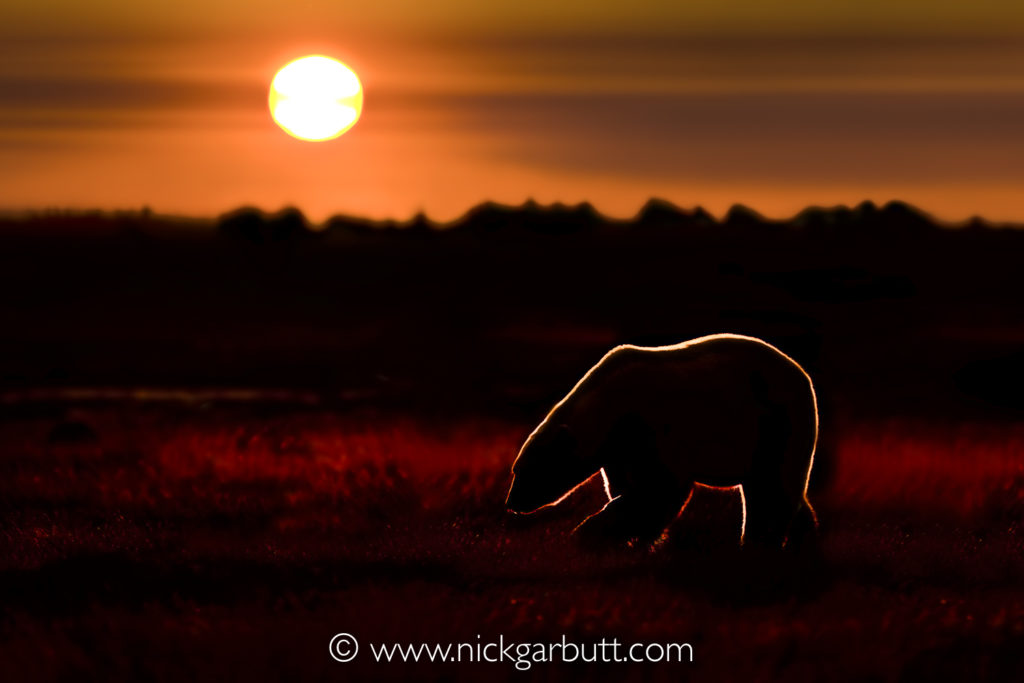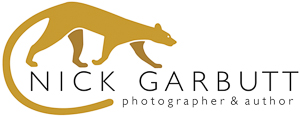Story Behind the Picture: Polar Bear Glow
Nikon D2x, Nikon 200-400mm @400mm, f4, 1600th second
It’s intuitive to think of polar bears walking across vast snow fields or swimming through ice flows. Seeing the Arctic’s apex predator on dry land in the warm glow of late evening sunshine is not an image than immediately springs to mind. And yet there is a location where this sight is common place at the right time of year.
As summer draws to a close, polar bears start to congregate on the southern shores of Hudson Bay in the Canadian Arctic and then slowly migrate west around towards Churchill, where they gather before venturing onto the recently formed pack ice for the winter hunting season. There are various places where bears come together on the tundra and can be seen wandering through a landscape dominated by rocky shores, low bushes and willows.
Late in the day, when the dwindling sun began kissing the horizon, I was struck by the incredible backlighting that picked out the bears’ outline. I imagined a light bulb inside the bears producing the surreal glow. It reminded me of those Ready Brek adverts from my childhood - ‘central heating for kids’. But how best to go about capturing the photo?

Backlit subjects can be so evocative: here a polar bear walks across the tundra on shores of Hudson Bay.
Timing was everything, as there was only a very narrow window of opportunity when the phenomenon was apparent. It lasted for five minutes at the most. And to see it to best effect required finding a bear in the open (so its outline was completely unbroken) and then getting into a position where the setting sun was behind it, but crucially slightly off to one side (so I did not have to pint the camera directly at the sun). To maximise the effect required significantly under exposing the image (by 3-4 stops), thus artificially creating a significantly darker exposure that emphasised the halo around the bear.
But this of course resulted in all other areas in the picture also being artificially dark, so this image required more work when processing in Lightroom to balance the various elements and create the final ‘look’ that I had envisaged. In particular I applied a large negative value to highlights (to take the edge off the still very bright areas) and a high positive value to shadows (to lift dark areas where some detail had been recorded). In short this images would have been virtually impossible to achieve on film, where such post production techniques are not possible.
